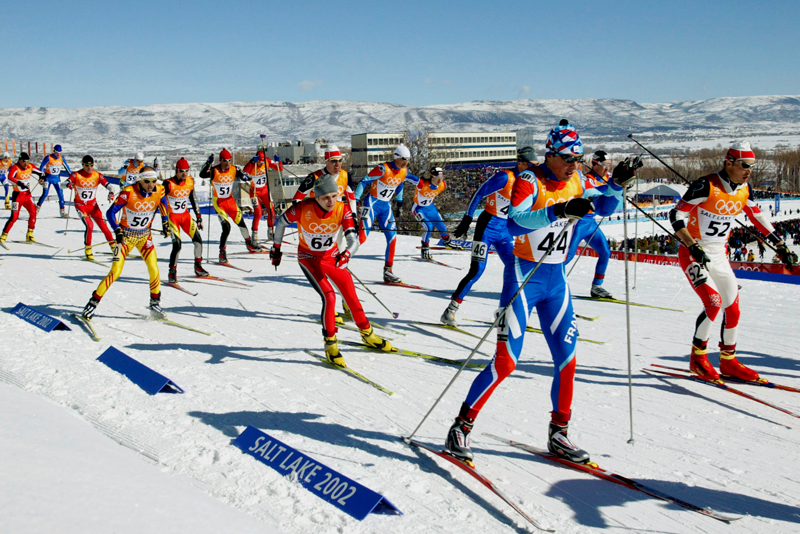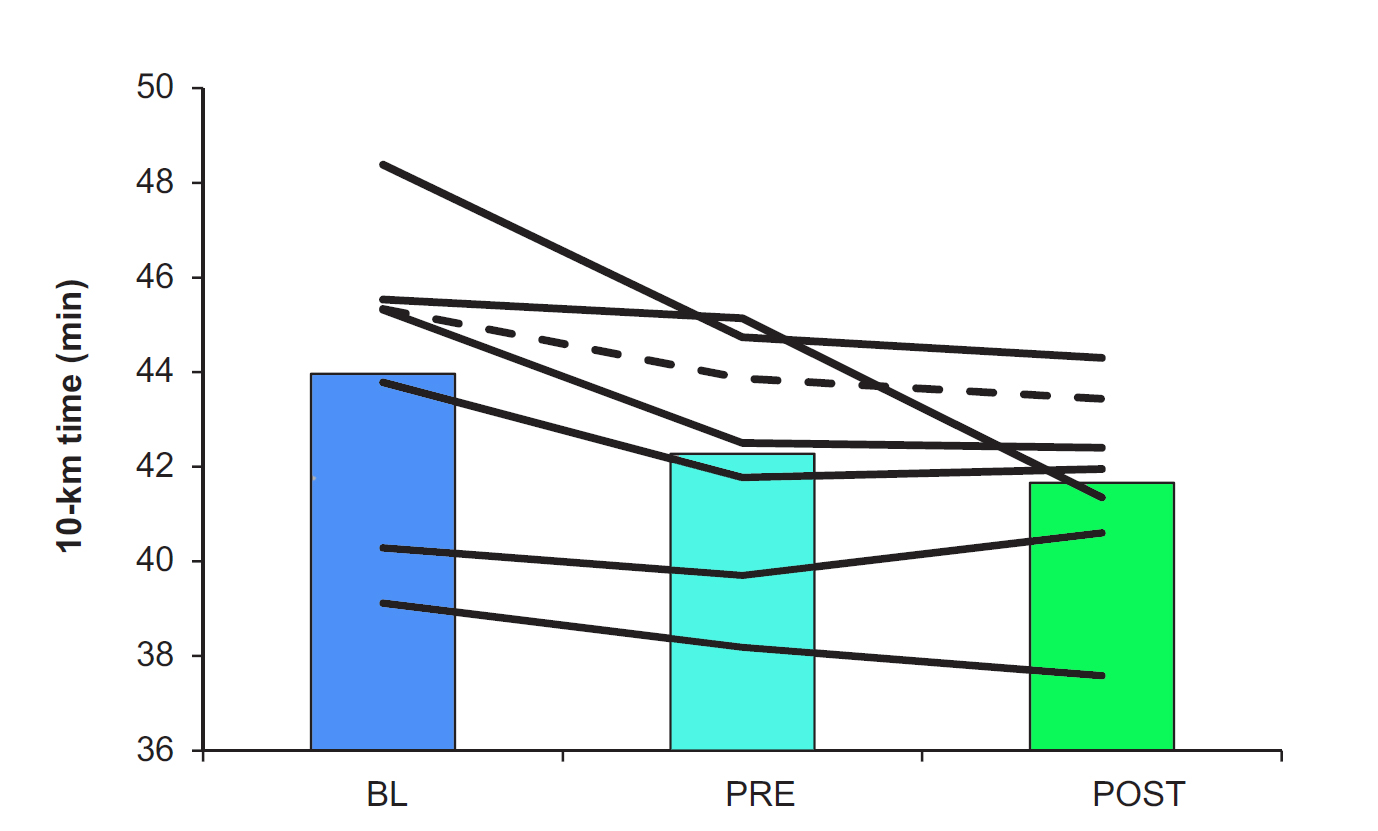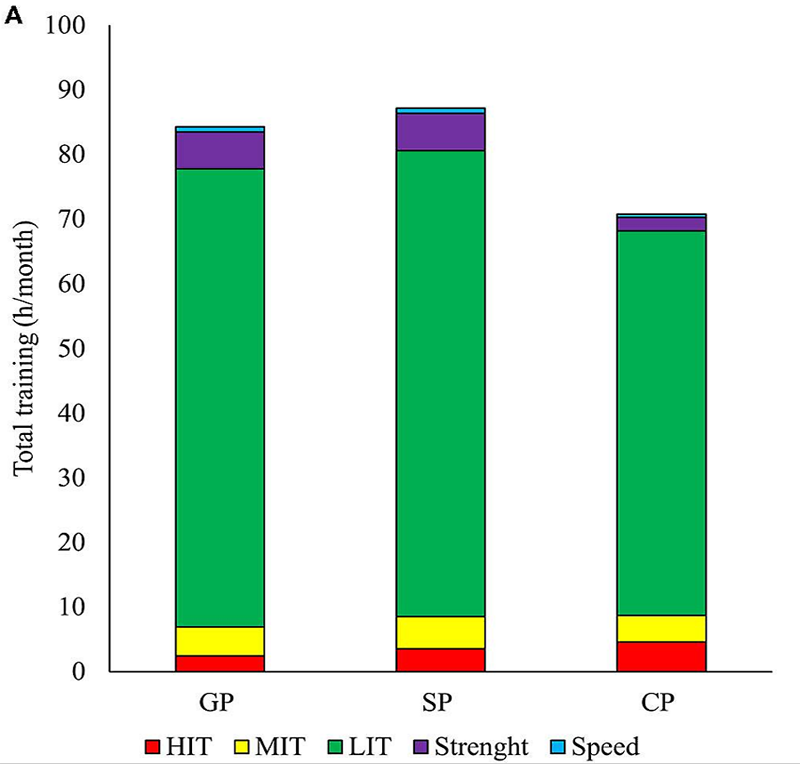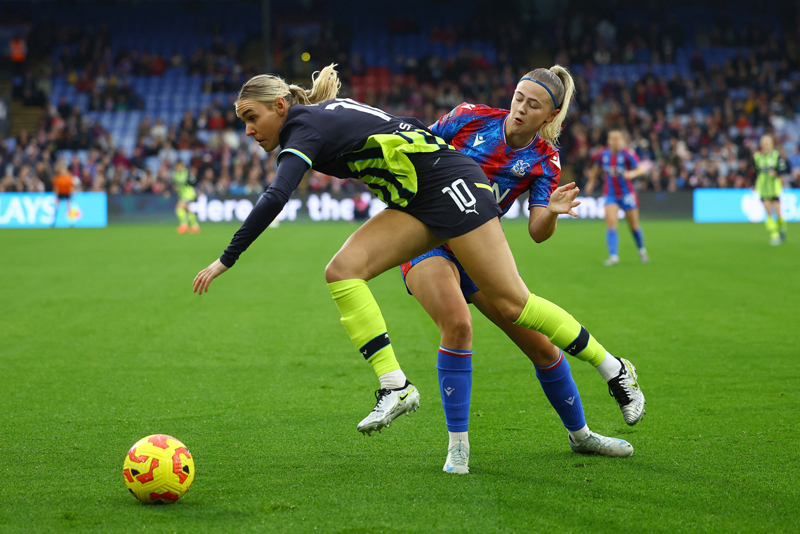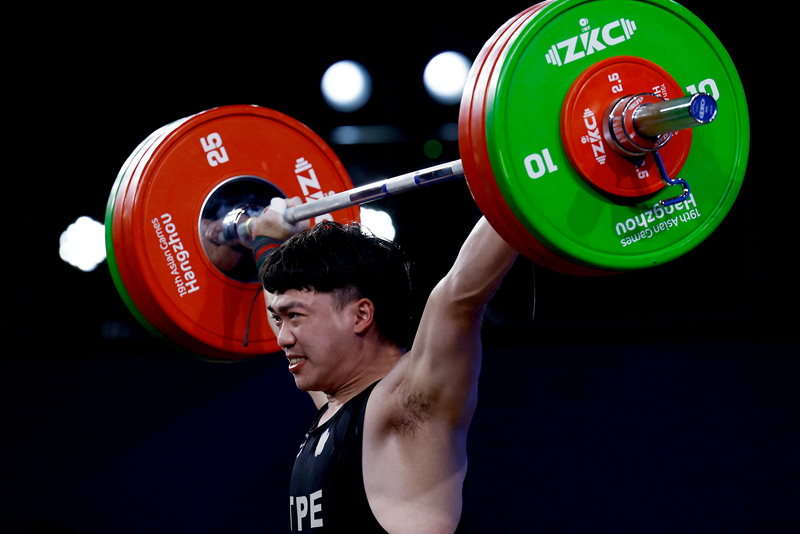You are viewing 1 of your 1 free articles. For unlimited access take a risk-free trial
Living life in the fast lane; the truth about training for speed
What proportion of your endurance training should be done as high-intensity training to improve your performance, and how intense should that training be? SPB looks at recent evidence from cross-country skiers and runners
Over recent years, a growing body of evidence has been accumulating that once you’ve reached a good base level of fitness, the way you manipulate your training intensity is the key to making further progress. There are an infinite number of ways to add speed/intensity to a training program. This can be achieved by many, many permutations of a number of variables including:
• The intensity of a workout or interval.
• The workout/interval duration and numbers of intervals.
• The number of intense sessions per week and ratio of intense to low-intensity (zone 1 training).
Needless to say, it’s impossible to make definitive recommendations for everyone. Firstly, what works best will vary according to an individual and his/her event/distance. Secondly, the recommended balance of these factors will change as fitness levels change, and at different times of the season. What we can do however, is to look at studies to see what kind of protocols have been tested and how effective they are.
Is less more?
A 2017 study by a team of Danish scientists looked at the frequency of added high-intensity speed endurance training(1). In particular, it sought to establish whether speed-endurance training performed every second day was more effective than performing it only half as often. Eighteen male and 14 female trained runners completed 20 sessions of training. However, the runners were split into two groups:
• Speed-endurance training every other day.
• Speed-endurance training every fourth day.
The speed-endurance protocol was based on high-intensity intervals. During the these sessions, the subjects first warmed up by running 1.5kms gentle then performing running, and sprint-specific exercises such as butt kicks, skips, and skips for height), and dynamic stretches (e.g., leg cycling, leg drives, and jump squats).
Following this the subjects performed all-out 30-second running bouts each separated by 3.5 minutes of rest. The ‘every other day’ group performed twelve 30-second repetitions on day 1 and day 5 and eight repetitions on day 3 and day 7, during an 8-day block. The ‘every fourth day’ group performed ten repetitions on day 2 and day 6 during an 8-day block. The difference in protocols was to ensure that the every other day group were able to spread the workload a little more evenly during each 8-day block
The key findings were that just ten speed endurance training sessions improved short-term exercise capacity and 10km performance of the runners – regardless of the frequency of training (see figure 1). If anything, the lower-frequency training resulted in greater performance improvements. And while adding a further ten sessions further improved sprint capacity, it didn’t result in any extra benefits for 10km performance. This is an important point; the runners in this study were well trained with excellent levels of fitness. Doubling the frequency (and workload of high-intensity training) produced no extra benefits – possibly because it didn’t allow for adequate recovery – something that less capable athletes should bear in mind.
Figure 1: 10km performances after ‘every fourth day’ speed-endurance training
BL = baseline (before the familiarisation procedure); PRE = before the ten sessions of speed-endurance training; POST = after the speed-endurance training. The solid lines represent individual male runners. The dotted line represents the female runner. Coloured bars represent the average overall.
(NB – the familiarization process involving trial sessions of 30-second intervals produced a performance gain in itself)
Will any old speed do?
There’s good evidence that adding some (but not too much) very high-intensity interval work to a base endurance program yields better performance gains than using longer bouts of slightly lower intensity (but still more intense than normal) work. However, the exact recipe for the best balance between high-intensity work and base endurance training may be quite flexible. Indeed, when it comes to older (over-40s) athletes, the recipe might not matter at all – only that some high-intensity work is added regardless of exact nature of that work.
In a 2018 study on masters runners, researchers compared the effects of different types of high-intensity training on the ability to sustain high speeds and 5km time trial performance(2). Thirty four male master runners with an average age of 47 years were assigned to three different training groups for an 8-week period:
· Continuous moderate-intensity training (CMIT) – this group ran 35kms per week divided across three sessions. These sessions consisted of: 1) 64.5 minutes at 70% of speed required to reach ‘gas exchange threshold’ or GET for short. (NB: GET is a very similar measure to maximum oxygen uptake [VO2max] but is a slightly more reliable measurement method. This intensity is moderately hard); 2) 58.5 minutes at 80% of GET (hard), and 3) 54 minutes at 90% of GET (a very hard intensity for a sustained pace).
· Discontinuous high-intensity training (DHIT) - this group also ran 35kms per week divided across three sessions. However, these sessions were broken into more, shorter intense bursts: 1) 18 sets of (1 minute at 120% speed of GET followed by 2 minutes at 65% speed at GET); 2) 18 sets of (1 minute at 130% speed at GET followed by 2 minutes at 65% speed at GET), and 3) 18 sets of (1 minute at 140% speed at GET followed by 2minutes at 65% speed at GET).
· Control group – these participants maintained their training habits during the 8-week period, consisting of 3-4 training session per week, averaging 50km·per week. No specific directions about training volume and intensity were given to these subjects but heart rates, speed, and total distance of each session were recorded.
The key findings were that both the CMIT and DHIT significantly improved running economy by around 4.5% (ie reduced the amount of energy required to sustain a given pace; good economy is a key measure of endurance performance), and also increased the speed the runners were able to maintain at 100% GET (ie flat out – see figure 2). The runners’ 5km times were also improved by around 2.5%. Importantly, these improvements were ONLY seen in the runners who added high-intensity work to their training (not in the controls, despite averaging almost 50% more weekly mileage), and the magnitude of the improvements were equivalent regardless of the nature of that high-intensity training!
Figure 2: Speed at maximum GET

Evidence from elite skiers
For more evidence on the use of speed/high-intensity sessions for developing performance in endurance athletes, we can turn to research on cross-country skiing, which is regarded as one of the most demanding, if not the most demanding endurance sport(3). Because of the need to develop very high oxygen uptake capacities, we might expect that elite cross country skiers would dedicate a significant amount of their training time to high-intensity training sessions. But is this actually true?
Over Olympic race distances, which range up to 50kms, research shows that annual training volumes are typically distributed as 88–95% endurance training, 5–10% strength training, and 1–2% speed training(4-6). Breaking down the endurance training intensity distribution observed in these elite Olympic XC skiers, we find that a ratio of 88 - 91% low-intensity work (ie steady state baseline endurance training), 3 - 7% medium-intensity work (ie approaching but not exceeding lactate threshold, which would be classed as hard sustained work) and 4 - 6% high-intensity/speed work exceeding lactate threshold (very hard and unsustainable intensity, typically consisting of repeated intervals and/or sprints).
Long-distance skiers
Although 50kms in a cross-country ski race is certainly demanding(!), for elite skiers, this distance is completed in around 70 -75 minutes, which equates to the kind of timescale needed for an elite runner to complete a half marathon. But what about longer distances – for example, the 2+ hours that it takes to complete a marathon or several hours to complete an ultra event? A 2018 study by a team of Greek and Swiss researchers looked at this question, but studied ultramarathon runners rather than cross-country skiers due to the lack of data for the latter(7). It found that as distances increase, runners tend to reduce the (already small) proportion of high-intensity training even further.
It wasn’t until 2019 that any data emerged on cross country skiers. Carried out by a team of Norwegian researchers, this study looked at all round skiers competing at short up to Olympic distance and compared them with skiers competing long distance (ie over 50kms)(8). It found that while baseline endurance training volume was similar (comprising 83% of total training time), there was a slight difference in the volume of medium-high intensity work; in the long-distance skiers, this comprised 3.0% medium and 5.5% high-intensity while in the all-round skiers, the ratios were 4.5% and 3.9% respectively (see table 1). In other words, the skiers training for very long distances actually spent proportionately more time training at very high intensities and less at medium intensities than those training for short to medium distance.
Interestingly, the long-distance skiers tended to be older on average than the all-round skiers, which goes against the assumption that older athletes carry out proportionately less high-intensity training than younger athletes due to the high effort levels required. However, some research shows that this assumption could be counterproductive since the training adaptations induced by high-intensity training per unit of time invested are greater in younger adults compared to older adults(9). Put another way, these older, longer-distance skiers would have definitely benefited from their extra time investment in high-intensity training!
Table 1: training intensity breakdown for shorter- vs. longer-distance skiers
|
All-round skiers (n = 6) |
Long-distance skiers (n = 3) |
|||
|
Total training (hours |
% of total training |
Total training (hours) |
% of total training |
|
|
LIT (<81% of HRmax) |
684 |
83.1 |
642 |
83.0 |
|
MIT (82–87% of HRmax) |
37 |
4.5 |
24 |
3.0 |
|
HIT (>88% of HRmax) |
32 |
3.9 |
43 |
5.5 |
|
Strength |
58 |
7.0 |
52 |
6.7 |
|
Speed |
13 |
1.5 |
14 |
1.8 |
|
Total annual training |
824 |
775 |
||
Up to date data
The most recent study on elite long-distance skiers comes from another Norwegian study, which investigated the training characteristics of world-class long-distance cross-country skiers(10). In order to qualify for the study, skiers had to have competed in the Visma Ski Classics for at least three years, and achieved at least two podium performances during their career, including at least one podium performance during their most successful season.
In this study, 12 world-class male long-distance cross-country skiing specialists reported their individual training data about the distribution of training volume over the year, training intensity, and different exercise modes (eg strength training and running), as well as specific training sessions during their most successful season (ie where the training regime had produced the best results for each skier). Ten of the athletes provided data directly from their training diaries, while the remaining two reported training information from written notes they had kept.
Distance findings
The results showed that averaged across the 12 athletes, the annual training volume was 861 hours. This comprised of 795 hours (92%) of endurance training, 53 hours (6%) of strength training, and 13 hours (2%) of speed technique. When broken down by endurance training intensity, the skiers performed 88.7% of their training volume at low intensity, with just 6.4%, and 4.8% performed at medium and high intensities respectively. During the general preparation phase of the season (building base endurance) and specific phase (building competition fitness), the medium and high intensity volumes were not considered significantly different to each other. However, during the competitive phase of the season, there was a marked shift towards more high-intensity training and a drop in base endurance training (see figure 3).
Figure 3: Training intensity distribution across the season
Training distribution across the annual period [general preparation period (GP: May–August), specific preparation period (SP: September–November), and competition period (CP: December–April) during the athletes’ most successful seasons distributed as endurance [low- [LIT], moderate- [MIT], and high-intensity [HIT]], strength, and speed training. Purple and turquoise shading shows proportion of strength and speed training respectively. Note the shift towards a greater proportion of high-intensity training during the competitive phase.
Implications for athletes
Let’s draw together the findings from the studies above to see if we can make general recommendations for endurance athletes who want to become faster. The first thing to reiterate is that if you want to get faster, you will have to undertake some form of high-intensity training on a regular basis, whether in the form of short or long intervals, race-pace sessions etc. However, the exact nature of the intense work you perform might not be that important, especially for older athletes. More importantly, the data suggests that the amount of high-intensity work you need to incorporate is actually quite low.
In the study on runners, a speed-endurance session performed every four days was just as effective as every two days – almost certainly because more recovery was possible despite half the high-intensity volume. But how exactly much high-intensity volume do you need? The data from the cross-country skiing studies shows that to be competitive across a range of distances, surprisingly little is required – just 4% to 7% of total training volume seems to suffice. This proportion equates to just three minutes of high-intensity work out of each hour of endurance training time. For a recreational athlete training ten hours per week, this would entail 30 minutes of high-intensity training in total per week.
A couple of caveats are need at this point however. Firstly, the skiers studied above were highly trained with an excellent level of base endurance. Without a good base level of fitness, relatively small amounts of high-intensity training may not be enough to produce significant changes in fitness. Secondly, 30 minutes of training in a 10hour training week doesn’t mean just one 30-minute interval session; you need to ensure you are spending 30 accumulated minutes actually working at very high intensity (above 88-90% max heart rate), and are not including rest periods.
In conclusion, the overriding take home message is that while you absolutely must include high-intensity work in your training program, you don’t need much and provided it is above 88% max heart rate, the exact intensity may not matter so much, especially for older athletes. So just do it!
References
1. J Appl Physiol 2017. 122: 48–59
2. Front Physiol Jan 2018. Vol 9 (21) doi: 10.3389/fphys.2018.00021.
3. Int J Sports Physiol Perform. 2017 Sep;12(8):1003-1011
4. PLoS ONE 9:e101796. 10.1371/journal.pone.0101796
5. Front. Physiol. 8:1069. 10.3389/fphys.2017.01069
6. Scand. J. Med. Sci. Sports 21, e9–e16
7. Front Physiol. 2018 Jun 1:9:634
8. Int. J. Sports Physiol. Perform 14, 1190–1199. 10.1123/ijspp.2018-0471
9. Int J Sports Med 2023; 44(07): 484-495
10. Front Sports Act Living. 2021 Feb 25;3:641389
Newsletter Sign Up
Testimonials
Dr. Alexandra Fandetti-Robin, Back & Body Chiropractic
Elspeth Cowell MSCh DpodM SRCh HCPC reg
William Hunter, Nuffield Health
Newsletter Sign Up
Coaches Testimonials
Dr. Alexandra Fandetti-Robin, Back & Body Chiropractic
Elspeth Cowell MSCh DpodM SRCh HCPC reg
William Hunter, Nuffield Health
Keep up with latest sports science research and apply it to maximize performance
Today you have the chance to join a group of athletes, and sports coaches/trainers who all have something special in common...
They use the latest research to improve performance for themselves and their clients - both athletes and sports teams - with help from global specialists in the fields of sports science, sports medicine and sports psychology.
They do this by reading Sports Performance Bulletin, an easy-to-digest but serious-minded journal dedicated to high performance sports. SPB offers a wealth of information and insight into the latest research, in an easily-accessible and understood format, along with a wealth of practical recommendations.
*includes 3 coaching manuals
Get Inspired
All the latest techniques and approaches
Sports Performance Bulletin helps dedicated endurance athletes improve their performance. Sense-checking the latest sports science research, and sourcing evidence and case studies to support findings, Sports Performance Bulletin turns proven insights into easily digestible practical advice. Supporting athletes, coaches and professionals who wish to ensure their guidance and programmes are kept right up to date and based on credible science.
